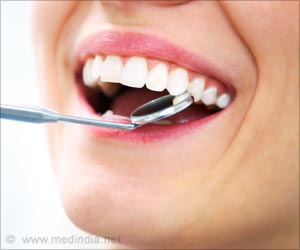Immune cells play a big role in the bone loss that results due to periodontal or gum disease, according to researchers at The Forsyth Institute. Earlier researchers had speculated that the immune system was involved in destruction of bone in periodontal disease, but this is the first time it has been confirmed in human gum tissue. Forsyth researchers hope that the finding would help create new ways to stop bone loss in gum disease.
The study, led by Toshihisa Kawai, D.D.S., Ph.D., examined whether immune response to periodontal bacteria is protective or pathogenic in the context of gum disease. Periodontal disease is an infection of the teeth, and their supporting structures, which results in soft tissue and bone destruction, leading to tooth loss. Dr. Kawai and his colleagues had found that B cells (B and T lymphocytes are immune cells) can contribute to increased periodontal bone loss coordinating with activated T-cells. Both cell types had previously been found to manifest a host immune response to the bacteria causing bone loss in animal models, by his group."This research validates our hypothesis that immune cells are harmful in gum disease," said Dr. Kawai. "It's a groundbreaking discovery because it truly gives a new understanding of periodontal disease, while also raising interesting questions about immune cells. We hope this work will help us save people's teeth in the future."
Research Overview
RANKL is a protein that is a major factor in the regulation of osteoclasts (cells that destroy bone). Dr. Kawai's research examined the receptor activator of NF-kB ligand, (RANKL)-mediated osteoclastogeneis, and the pivotal role it plays in inflammatory bone resorption. The aim of this study, which will be published in the September issue of the American Journal of Pathology, was to identify the cellular source of RANKL in the bone resorptive lesions of periodontal disease. An active periodontal lesion is characterized by the prominent infiltration of B cells and T cells, both of which are major immune lymphocytes. Specifically, the occupancy of 50-60% of such cellular infiltrates by plasma cells (ultimately, differentiated B cells) makes periodontal disease very distinct from other chronic infectious diseases. B cells are known to produce a weapon (antibody) that normally attacks bacteria and protects our body from bacterial infection. As a consequence of dense infiltration of B cells found in the gum, periodontally diseased patients mount significantly elevated antibody levels to bacteria colonizing around gum tissues. However, the fact that periodontal disease continues to progress, even though B cells produce a weapon to fight off the bacteria, raised an important and interesting question. To answer this question, Dr. Kawai's group found that RANKL expressed on the T and B cells in the patient's gingival tissues were functionally sufficiently potent to induce bone destructive cells (osteoclasts) in a laboratory culture system, in spite of the elevated presence of B and T lymphocytes. Since it has never been reported that any bacteria per se invade and resorb bone independent of osteoclast activation, RANKL expression by T cells and B cells proves to be one of the major stimuli of osteoclast precursor cells and, hence, bone loss through periodontal disease.
Source: Eurekalert







